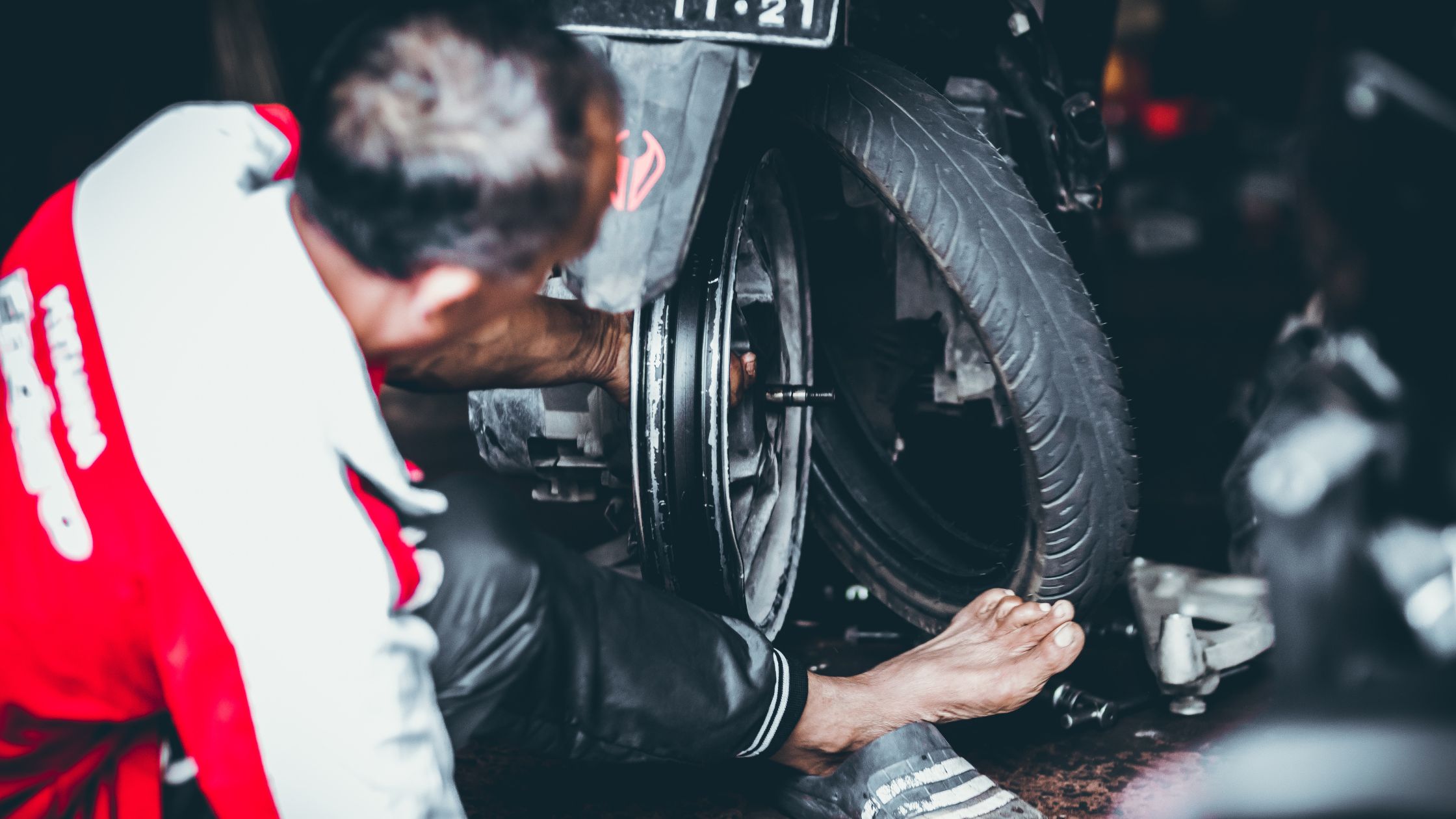Jika anda sedang mencari Why Synchronous Motor Is Not Self Starting, anda berada di tempat yang tepat! Disini saya akan mencoba membahas beberapa pertanyaan mengenai Why Synchronous Motor Is Not Self Starting.
How can a synchronous motor be self starting?
The synchronous motor is made self-starting by providing a special winding on the rotor poles, known as damper winding or squirrel cage winding. AC supply given to the stator produces a rotating magnetic field which causes the rotor to rotate.
Which of the given motor is not self starting?
The Single-phase induction motor is not self-starting. According to the double field theory, this alternating flux ϕm is divided into two components of magnitude ϕm / 2 each and rotate in the opposite direction, with the synchronous speed NS.
Why are synchronous motors not started under load?
3.2. Synchronous motors are inherently not able to self-start on an AC power source with the utility frequency of 50 or 60 Hz. As stated in Chapter 1, this is because synchronous motors can develop a torque only when running at the synchronous speed.
Why synchronous motor is doubly excited machine?
A synchronous machine is called a doubly excited machine because both its rotor and stator are excited. To achieve magnetic locking between stator and rotor, double excitation needed. The stator of 3 phase synchronous motor is excited with a 3-phase supply while rotor is with DC Supply.
Can a synchronous motor be started with a load on it?
Now the synchronous machine is operating, as a motor, from ac supply mains and dc machine acts as load on it. The synchronous motor can also be started by the exciter mounted on an overhung synchronous motor bracket and shaft extension.
Why synchronous motor is a constant speed motor?
Synchronous Motor: Synchronous motor rotates due to interlocking of stator R.M.F poles and rotor poles. Due to this Interlocking, the rotor always rotates at a synchronous speed (Ns).
Which motors are self starting?
Three-phase induction motor is self-starting, because winding displacement is 120 degrees for each phase and supply also has 120 phase shift for 3-phase. It results in a unidirectional rotating magnetic field is developed in air gap which causes 3-phase induction motor to self-start.
What is V curve of synchronous motor?
A V-curve of a synchronous motor shows the relation between armature currents as ordinates and field currents as abscissas when the motor operates with a constant power input at rated terminal voltage.
Why exciter is essential for synchronous motor?
The exciter provides the power to the electromagnets that form the poles on the rotor that in turn follow the rotating magnetic field from the system.
What is slip in synchronous motor?
Slip is the difference between the synchronous speed of a motor and its actual speed. Mathematically it is determined by. Using the example above for synchronous speed of a motor with four poles operating at 60 hertz, the value was calculated to be 1800 RPM.
What happens when synchronous motor is loaded?
If the load on the motor further increases, then the torque angle (δ) also increases, i.e., the rotor field poles lag behind the stator field poles by a greater angle (see Figure-2), but the motor continues to run at synchronous speed.
Why there is no slip in synchronous motor?
Because the rotor turns at the same speed as synchronous speed (speed of the rotating magnetic field), there is no slip. The speed of rotation of the motor is constant in a synchronous motor, and does not vary with load, as in an induction motor.

Why hunting is produce in synchronous motor?
Hunting increases the probability of resonance. When the frequency of the torque component becomes equal to that of the oscillations of the synchronous machine, resonance may take place. Large mechanical stresses may develop in the rotor shaft of the synchronous machine.
Why do we use damper winding?
Damper windings helps the synchronous motor to start on its own (self starting machine) by providing starting torque. By providing damper windings in the rotor of synchronous motor “Hunting of machine”can be suppressed.
Why DC machine is doubly excited machine?
The synchronous motor is known as a doubly-excited machine because its stator and rotor both are excited. To achieve magnetic locking between stator and rotor, double excitation is needed. The stator of the synchronous motor is supplied with a 3 ϕ supply while the rotor is excited by a DC source.
What is the speed regulation of synchronous motor?
Synchronous motor running at the constant synchronous speed. Therefore there is no speed loss, so the speed regulation of synchronous motor is zero.
Why single phase motors are not self starting?
From the above topic, we can easily conclude that the single-phase induction motors are not self-starting because the produced stator flux is alternating in nature and at the starting, the two components of this flux cancel each other and hence there is no net torque.
Which supply is given to synchronous motor?
for a synchronous motor we give balanced 3 phase supply to the stator which produces a rotating magnetic field.in order to produce torque we need another magnetic field which has to be relatively stationary with respect to the main field.
What is V curve and inverted V curve?
Inverted V curves of a synchronous motor are defined as the graphs plotted between power factor and field current (If) of the motor. A family of inverted V curves of a synchronous motor obtained by plotting the power factor versus field current is shown in Figure-2.
What is self control of synchronous motor?
In self controlled mode, the supply frequency is changed so that the synchronous speed is same as that of the rotor speed. Hence, rotor cannot pull-out of slip and hunting eliminations are eliminated. For such a mode of operation the motor does not require a damper winding. Fig (5.4 )Self Controlled Mode.
Is speed control possible in synchronous motor?
Speed of synchronous motors can be controlled using two methods called open loop and close loop control. Open loop contol is the simplest scalar control method where motor speed is controlled by independent frequency control of the converter.
Which type of rotor is used in synchronous motor?
Cylindrical, round rotors, (also known as non salient pole rotor) are used for up to six poles. In some machines or when a large number of poles are needed, a salient pole rotor is used. The construction of synchronous motor is similar to that of a synchronous alternator.
Why three phase synchronous motor is not self start explain?
Above a certain size, synchronous motors are not self-starting motors. This property is due to the inertia of the rotor; it cannot instantly follow the rotation of the magnetic field of the stator. Once the rotor nears the synchronous speed, the field winding is excited, and the motor pulls into synchronization.
Is single-phase motor self-starting?
Single-phase induction motors are not self-starting without an auxiliary stator winding driven by an out of phase current of near 90°. Once started the auxiliary winding is optional. The auxiliary winding of a permanent split capacitor motor has a capacitor in series with it during starting and running.
Terimakasih telah membaca Why Synchronous Motor Is Not Self Starting, semoga jawaban dari pertanyaan anda telah saya jawab semua. Semoga bermanfaat!
 Mobil Series Situs Mobil Terbaik se-antero Bintaro
Mobil Series Situs Mobil Terbaik se-antero Bintaro
